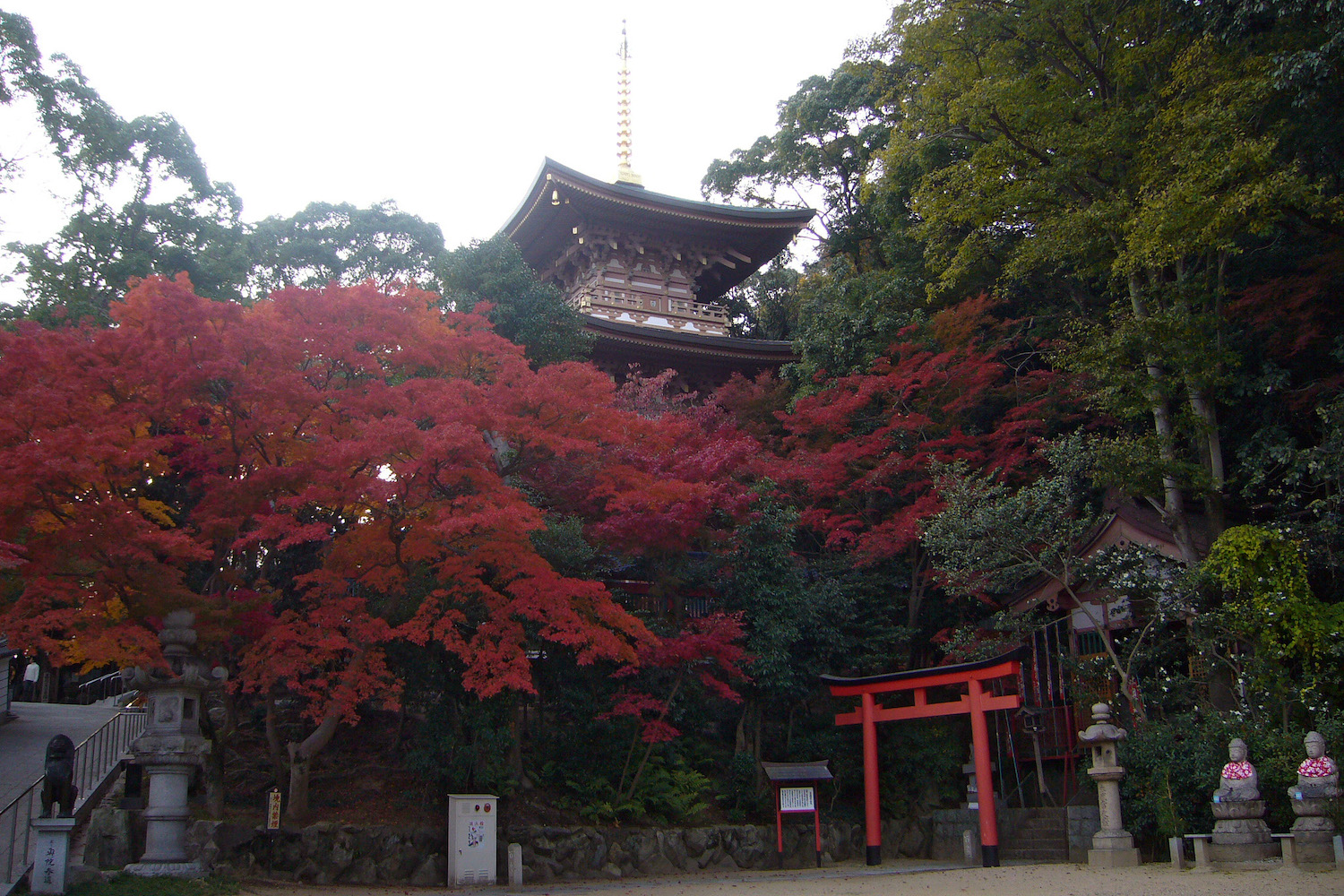May 25, 2022
The Highlights of Suma Temple in Kobe
A highlight of Kobe (and, in fact, Kansai as a whole) is Suma Temple. Dating back to 886, it is the main temple of the Sumadera branch of the Shingon Buddhists. The great thing about Suma Temple is the grounds, which feature many interesting statues and other highlights. There are a few things to look out for in particular.
The Pagoda
When you arrive at Suma Temple, the first thing you’ll notice is the attractive pagoda. The structure has three stories and is bright red, which looks striking against the greenery of the mountains, providing a backdrop to the North.
Inside the Temple
Before you enter the temple, head over to the temple office, you can pick up a guide to the temple (there are guides available in English) and a prayer candle to make an offering to the deities, which will grant you a wish. You should light the candle and leave it at the front of the main building. You can also purchase a fortune slip with a good luck charm inside or a netsuke.
Giant Prayer Beads
Outside the temple are some massive prayer beads that are worn around your neck, not around your wrist as you might expect. Make a wish, and Kobo Daishi will ensure it comes true.
Prayer Wheel
Another place to make a wish is at the prayer wheel. It sits on the back of a turtle and is inscribed with seven gods: Daikokuten, Fukurokuju, Bishamonten, Hoteison, Benzaiten, Jurojin, and Ebisuten. All the gods are lucky and will grant your wishes.
Warabe Jizo
“Warabe” is an old word for “child,” and Jizo is the Buddhist guardian of children and travelers. You can see Warabe Jizo statues throughout Japan, but the ones at Suma Temple are particularly perfect for a photo op dressed in their aprons and knitted caps. There are six statues in all, each holding a slightly different pose. Some have their arms in banzai to express joy, and others make a peace sign.
Five Monkeys
There are normally three monkeys: see no evil, hear no evil, and speak no evil. However, at Suma Temple, there are five, each inscribed with Buddhist teachings. Visitors can rub them on their heads to make them move.
Bujikaeru Frog
Meaning “getting-home-safely frog,” Bujikaeru is another moving sculpture: its eyes rotate, and its neck turns. If you want to experience a surprise, you should rotate the eyes (this is due to the Japanese expression “rotating one’s eyes,” which means astonishment). If you want to ease your worries about debt, you should turn its neck — being unable to turn your neck means being stressed about making debt repayments.
Suma Temple is an ideal place to find peace and quiet outside the city. Plus, nearby Sumaura Park offers excellent views of Kobe Bay, particularly if you take the ropeway to the top of the mountain. However, if you don’t mind the crowds, it’s worth visiting on the 20th or 21st of the month as these are the days Suma Temple holds its festival.
663highland, CC BY-SA 3.0, via Wikimedia Commons


About the author